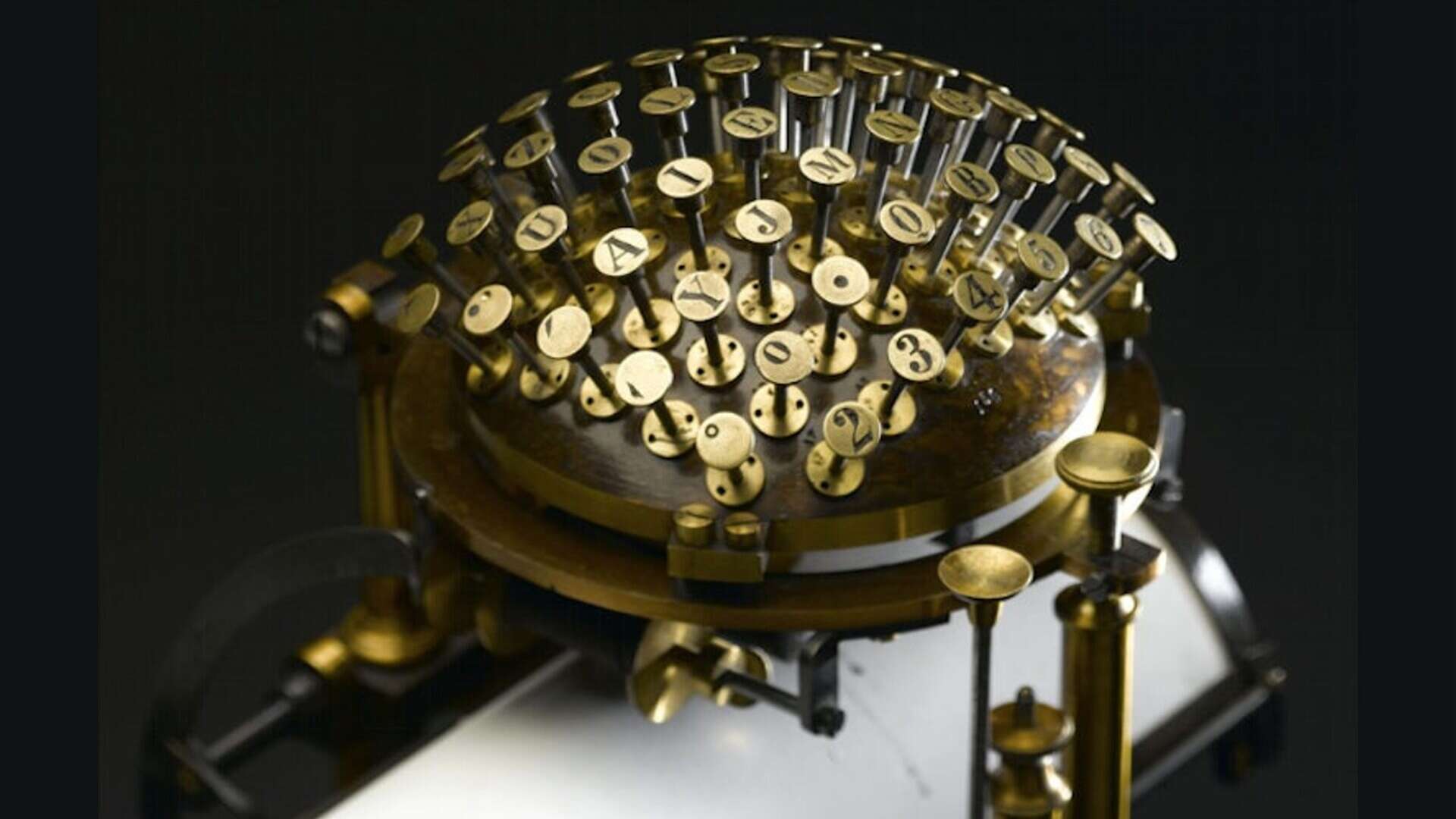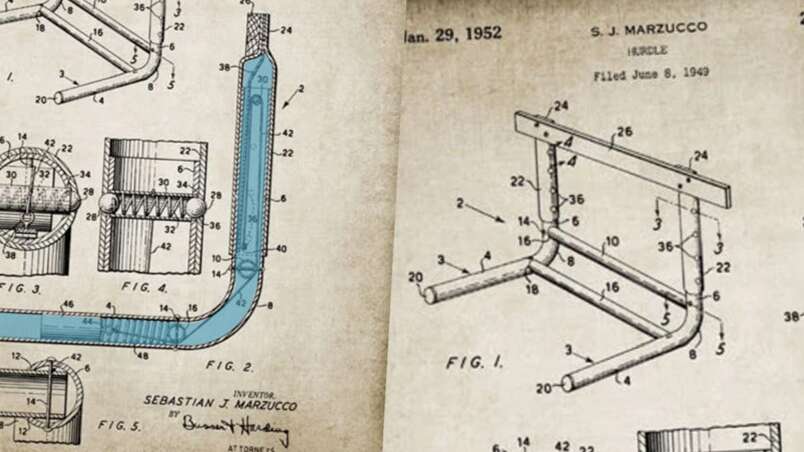WHAT CAN CX LEARN FROM...
SURPRISING INSIGHTS BY BRINGING IN OFF-BEAT CASES
LONG READ
CX, TYPEWRITERS AND HURDLES
HOW SLOWING DOWN CAN BE REALLY SMART
The letters on your keyboard are stupid. They seem to be arranged completely at random, without any thought to it. Why aren’t they organised alphabetically? However….this is done so by design. To slow you down. It’s an idea from 150 years ago that still affects us all when typing. Not only is it fascinating idea, it is also very valuable. And… completely untrue.
So, the story is that originally keys were indeed arranged in alphabetical order. But that typists got too good at their job. Typing as fast as they did led the “arms” of the typewriter to get cross-wired and stuck. In response keyboard manufacturers then randomised the order of keys to intentionally slow down typists and keep their type writing machines free from errors (and costly repairs).
Of course, reading this I was immediately captivated. It just sounded too good a story to be true. Well, turns out it’s indeed not true at all. But to get there, I spiraled down a rabbit-hole called ‘the history of typewriters’. A wholly unexpected ride littered with valuable lessons we can use to improve our CX programmes, NPS initiatives and all other tasks, roles or ideas. A ride into inventions, blind friends, world records, odd designs, commercial decisions and about creating lasting impact.
Curiosity is never ever a bad idea. Exploring different fields will always maximise your expertise. And the further apart, the more there is to learn.
So, typewriters it is. Ready?
The first patents describe ‘an artificial machine for impressing letters’ dating from the 18th century. But it’s the 19th century where the real magic happens. The Italian Pellegrino Turri invented a machine to aid a befriended blind Countess, that’s a story in its own right. By the way, he also invented the carbon paper. Another Italian, Giuseppe Ravizza, created a prototype typewriter in 1855 that he beautifully called the Cembalo Scrivano. The “Scribe Harpsichord”… A lesson right there, always give your product or programme an inspiring name rather than a functional description!
And there are many, many inventors and scientists and designers that share credits. Historians have estimated that some form of typewriter was invented 52 times until it came to a workable design.
Inventing and re-inventing until it becomes workable sounds quite like our CX profession.
The first successful commercially sold machine was the ‘Hansen Writing Ball’ of 1870. More resembling a pincushion, it’s a strange and fascinating design. Odd and beautiful at once. But however eccentric it may look to us now, it was the design widely used in offices of the day. And it even won First Prize at the 1873 Vienna World Exhibition.
But… that very same year New York based company Remington and Sons began producing their first typewriters on March 1, 1873. Hey, exactly 150 years ago! It is this Remington typewriter that established two things. First, the official name ‘Type-Writer’. And second, it introduced the QWERTY layout.
Up until then all machines used an alphabetical key arrangement. But not Remington. We already know the story that they intentionally randomised the order of the keys to slow down typists. But the funny thing is, it’s exactly the other way around! The design was intended to speed up the pace. And actually it’s very simple. The QWERTY layout sees letters split in areas left and right. This new design allowed to alternate hands while typing, which makes typing faster.
Remington wasn’t alone in exploring how to optimise performance. Blickensderfer, a competing typewriter, introduced the sequence “DHIATENSOR” in the top row. The reasoning behind not odd at all. They thought it would be smart to have the 10 letters closest together that are capable of composing 70% of the words in the English language. Sounds good… in theory. But can you imagine typing with your fingers getting all entangled in the top row?
If you hadn’t already figured it out, the lesson here is: involve your customers. Test, prototype, figure it out. Don’t design from behind your safe, comfortable drawing board.
So is the design for QWERTY the Holy Grail? No, not at all. It has a disbalance. Thousands of English words can be spelled with only the left hand, versus just a couple of hundred words that can by typed using only the right hand on the keyboard.
But it doesn’t need to be perfect.
It just needs to be better than the rest.
And their design was better than the rest. With the Remington typewriter the 1888 world record was set to a whopping 125 words per minute (blindfolded). With it, QWERTY became the industry standard design we are still using today.
Ok, lessons all over the place for everyone of us involved in CX and all sorts of other business programmes, initiatives and roles. I don’t want to spell them out. But if I would, the easy option would be to focus on speeding up or improving the performance of whatever it is you set out to do. Of course.
But remember how we started? How intriguing the intentionally slowing down part was? That’s more interesting. Because surely you cannot apply that particular aspect to your work and benefit from it?
Well, yes you can. Designing ‘hurdles’ is even a really smart thing to do if you want to create impact.
You are giving a presentation? Limit it to only 25 or 50 participants. Your presentation will be more interesting, just because you’ve added the sensation that someone ‘might miss out’. It also empowers you to influence registration. That obnoxious person who just cannot stop venting criticism even though he’s not an expert? ‘Sorry, the room is full’. Or that analyst who just cannot stop herself from correcting out loud when you (intentionally) use rounded numbers? ‘Aw, the last seat was just booked’. Or that one influential senior person that gives extra weight to your presentation? ‘I have a seat reserved for you.’
It’s just an example, there are many more. Are you hosting a workshop? Give potential attendees some assignment they have to do first. Sending a report? Only send it to those that commit to discussing it in their teams and invite you to join. And so on and on…
Let me know what you come up with to slow things down.
Just don’t be quick with it.
LONG READ
CX, TYPEWRITERS AND HURDLES
HOW SLOWING DOWN CAN BE REALLY SMART
The letters on your keyboard are stupid. They seem to be arranged completely at random, without any thought to it. Why aren’t they organised alphabetically? However….this is done so by design. To slow you down. It’s an idea from 150 years ago that still affects us all when typing. Not only is it fascinating idea, it is also very valuable. And… completely untrue.
So, the story is that originally keys were indeed arranged in alphabetical order. But that typists got too good at their job. Typing as fast as they did led the “arms” of the typewriter to get cross-wired and stuck. In response keyboard manufacturers then randomised the order of keys to intentionally slow down typists and keep their type writing machines free from errors (and costly repairs).
Of course, reading this I was immediately captivated. It just sounded too good a story to be true. Well, turns out it’s indeed not true at all. But to get there, I spiraled down a rabbit-hole called ‘the history of typewriters’. A wholly unexpected ride littered with valuable lessons we can use to improve our CX programmes, NPS initiatives and all other tasks, roles or ideas. A ride into inventions, blind friends, world records, odd designs, commercial decisions and about creating lasting impact.
Curiosity is never ever a bad idea. Exploring different fields will always maximise your expertise. And the further apart, the more there is to learn.
So, typewriters it is. Ready?
The first patents describe ‘an artificial machine for impressing letters’ dating from the 18th century. But it’s the 19th century where the real magic happens. The Italian Pellegrino Turri invented a machine to aid a befriended blind Countess, that’s a story in its own right. By the way, he also invented the carbon paper. Another Italian, Giuseppe Ravizza, created a prototype typewriter in 1855 that he beautifully called the Cembalo Scrivano. The “Scribe Harpsichord”… A lesson right there, always give your product or programme an inspiring name rather than a functional description!
And there are many, many inventors and scientists and designers that share credits. Historians have estimated that some form of typewriter was invented 52 times until it came to a workable design.
Inventing and re-inventing until it becomes workable sounds quite like our CX profession.
The first successful commercially sold machine was the ‘Hansen Writing Ball’ of 1870. More resembling a pincushion, it’s a strange and fascinating design. Odd and beautiful at once. But however eccentric it may look to us now, it was the design widely used in offices of the day. And it even won First Prize at the 1873 Vienna World Exhibition.
But… that very same year New York based company Remington and Sons began producing their first typewriters on March 1, 1873. Hey, exactly 150 years ago! It is this Remington typewriter that established two things. First, the official name ‘Type-Writer’. And second, it introduced the QWERTY layout.
Up until then all machines used an alphabetical key arrangement. But not Remington. We already know the story that they intentionally randomised the order of the keys to slow down typists. But the funny thing is, it’s exactly the other way around! The design was intended to speed up the pace. And actually it’s very simple. The QWERTY layout sees letters split in areas left and right. This new design allowed to alternate hands while typing, which makes typing faster.
Remington wasn’t alone in exploring how to optimise performance. Blickensderfer, a competing typewriter, introduced the sequence “DHIATENSOR” in the top row. The reasoning behind not odd at all. They thought it would be smart to have the 10 letters closest together that are capable of composing 70% of the words in the English language. Sounds good… in theory. But can you imagine typing with your fingers getting all entangled in the top row?
If you hadn’t already figured it out, the lesson here is: involve your customers. Test, prototype, figure it out. Don’t design from behind your safe, comfortable drawing board.
So is the design for QWERTY the Holy Grail? No, not at all. It has a disbalance. Thousands of English words can be spelled with only the left hand, versus just a couple of hundred words that can by typed using only the right hand on the keyboard.
But it doesn’t need to be perfect. It just needs to be better than the rest.
And their design was better than the rest. With the Remington typewriter the 1888 world record was set to a whopping 125 words per minute (blindfolded). With it, QWERTY became the industry standard design we are still using today.
Ok, lessons all over the place for everyone of us involved in CX and all sorts of other business programmes, initiatives and roles. I don’t want to spell them out. But if I would, the easy option would be to focus on speeding up or improving the performance of whatever it is you set out to do. Of course.
But remember how we started? How intriguing the intentionally slowing down part was? That’s more interesting. Because surely you cannot apply that particular aspect to your work and benefit from it?
Well, yes you can. Designing ‘hurdles’ is even a really smart thing to do if you want to create impact.
You are giving a presentation? Limit it to only 25 or 50 participants. Your presentation will be more interesting, just because you’ve added the sensation that someone ‘might miss out’. It also empowers you to influence registration. That obnoxious person who just cannot stop venting criticism even though he’s not an expert? ‘Sorry, the room is full’. Or that analyst who just cannot stop herself from correcting out loud when you (intentionally) use rounded numbers? ‘Aw, the last seat was just booked’. Or that one influential senior person that gives extra weight to your presentation? ‘I have a seat reserved for you.’
It’s just an example, there are many more. Are you hosting a workshop? Give potential attendees some assignment they have to do first. Sending a report? Only send it to those that commit to discussing it in their teams and invite you to join. And so on and on…
Let me know what you come up with to slow things down.
Just don’t be quick with it.



